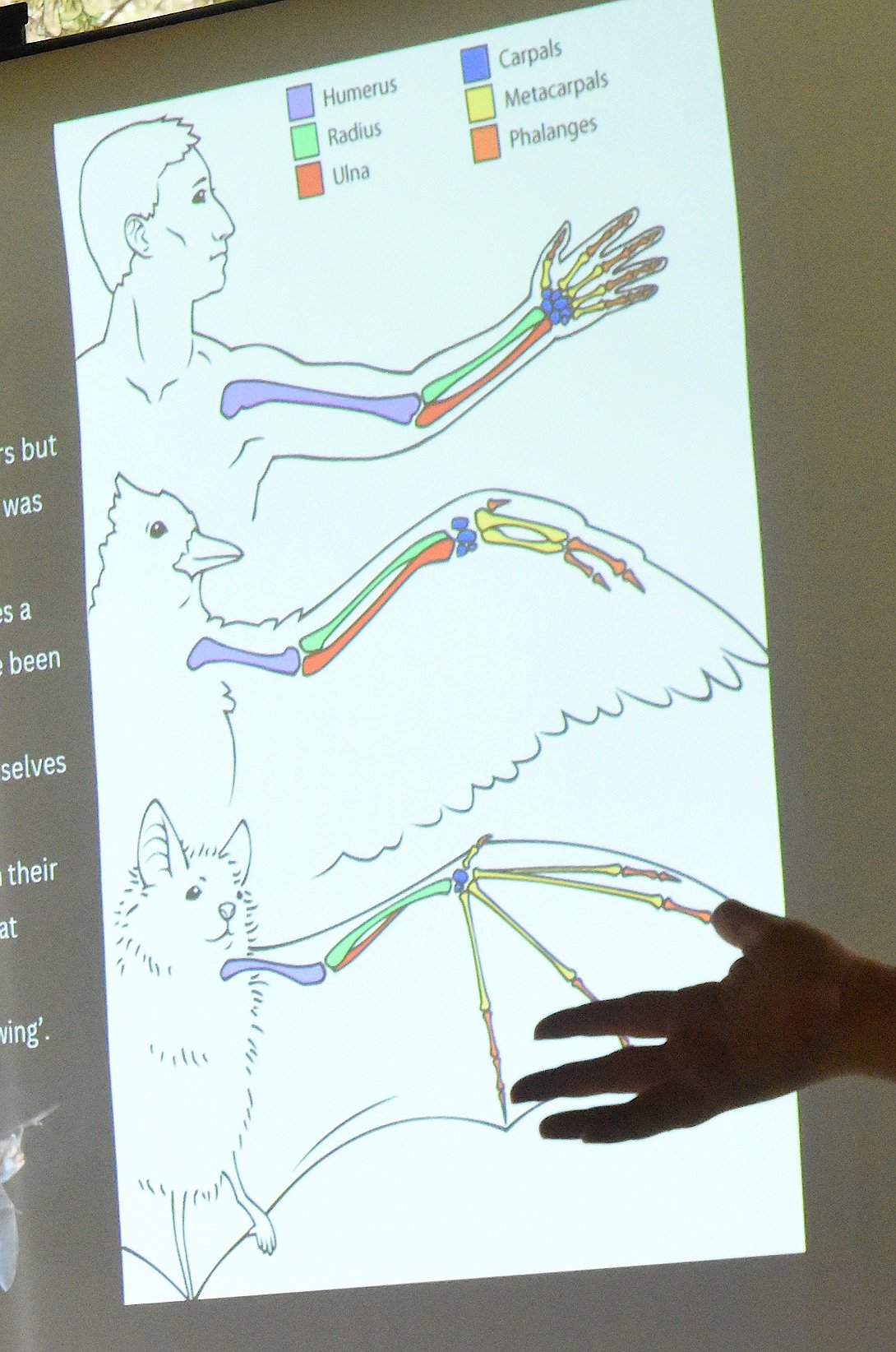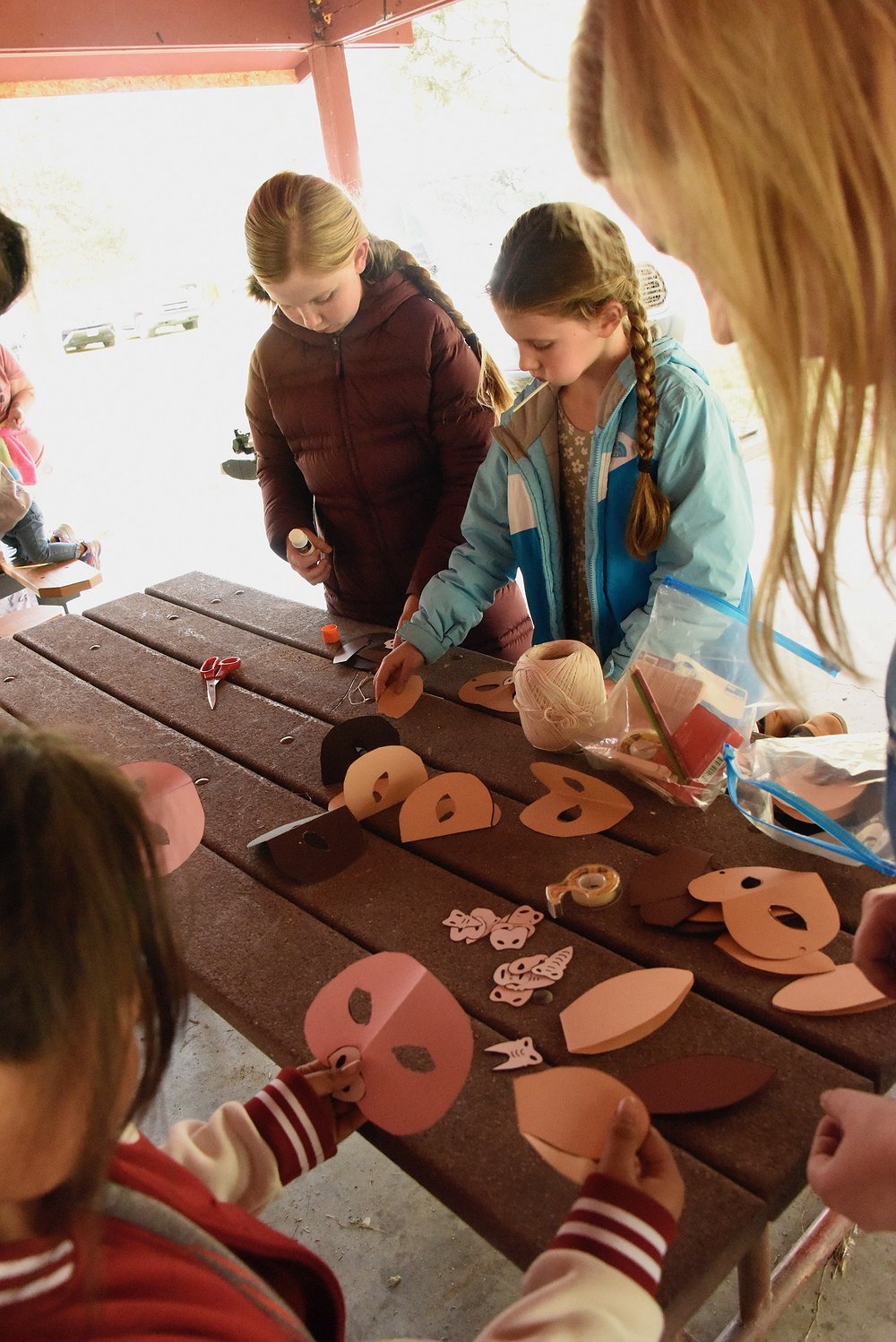Bison Range goes batty in honor of Bat Week
In honor of international Bat Week, Oct. 24-31 and in advance of Halloween, bat enthusiasts gathered Saturday, Oct. 19, to celebrate the iconic critter at the CSKT Bison Range in Moiese.
Emily Rohrlach, the range’s Information and Education Specialist, presented the program on bats. Many kids were present, as were quite a few adults among the more than 40 attendees.
Starting with the sound advice to respect all animals, Rohrlach told her audience that bats are found on almost every continent, with 1,300 bat species worldwide. The two main categories of bats are micro bats and mega bats, she said.
Micro bats are usually found in colder climates and include Montana’s 15 species of bats. She suggested that farmers, ranchers and other Montanans should appreciate these busy little mammals, who eat at least 1,000 mosquitoes and other insects per day, helping save money on pest control.
Mega bats hang in warmer areas, and include fruit bats, flying foxes and fox-face bats. Flying foxes can weight up to three pounds.
Avocados, peaches, mangoes, bananas are a few of the kinds of fruit pollinated by bats. In Mexico, Mexican long-tail bats pollinate agave plants, used to make tequila.
Some bat species hibernate, some migrate, and some do both.
Of course, during the month leading to Halloween, you can’t talk about bats without mentioning vampire bats. Contrary to the myth of a big hairy beast flying out of his cave with giant fangs dripping blood, vampire bats are actually pretty shy and are not aggressive, Rohrlach said.
This species has to eat all the time just to keep themselves alive and their primary source of food is livestock. Nocturnal creatures, they follow slow-moving livestock or find sleeping livestock. And unlike bats portrayed in vampire movies, they don’t suck blood; instead, they make a small wound on the animal and then lap the blood as a kitten would sip milk.
An enzyme in their saliva causes the blood to clot so the wound heals quickly; that same enzyme is currently being utilized in stroke medications for people.
Vampire bats are very athletic little critters, according to Rohrlach; they can run and jump as well as fly.
Echolocation is another magical trick bats utilize. According to the National Park Service’s website, “Bats produce sound waves at frequencies above human hearing, called ultrasound. The sound waves emitted by bats bounce off objects in their environment. Then, the sounds return to the bats' ears, which are finely tuned to recognize their own unique calls.”
Bats use echolocation when hunting to pin-point the exact location of its prey, and then swoops in, and devours the insect. While not all bats utilize echolocation, Montana’s population of insect-devouring micro bats relies on this ability to find food and each other.
Colonies of bats live in caves or hollow trees, although some bats roost in attic spaces or barns. Rorlach encouraged those wanting to build a bat house to use information from Bat Conservation International, https://www.batcon.org/, since many commercial bat houses are not attractive to bats.
Bats are the only true flying mammals, and their scientific name, Chiroptera, means hand wing. They have fingers, like humans, and are very clean, like cats, spending lots of time grooming themselves.
Bats are most closely related to primates (like humans) and are very social, residing in colonies, and living to be up to 20 years old in the wild. Their lifespan in captivity is even more.
Rohrlach told the crowd that the oldest bat ever found was 41 years old and lived in Siberia.
Most bats have one or two babies, called pups, annually. The whole bat colony helps care for the kids. It’s even been documented, Rorlach said, that when a pup’s mother is killed or dies, other bats in the colony will adopt them.
The greatest threat to bats is habitat loss. However, wind turbines kill about 14,000 of these insect eaters every year.
Another killer is a fungus called white-nose syndrome that grows on the walls of caves that bats frequent. It grows on the bats and dehydrates them, which causes them to wake up earlier than normal from hibernation, and starve to death because food isn’t yet available.
Rohrlach corrected the misinformation that all bats have rabies. The disease actually infects less than one percent of the population.
During the question-and-answer period, one child asked what to do with an injured bat if they found one. Rorlach suggested summoning an adult and calling a local veterinarian or game warden; live bats should only be handled with heavy leather gloves, while dead bats can be picked up, also using gloves, and retained in a plastic baggy for authorities to examine.
At the close of the bat talk, children and adults were invited to enjoy hot chocolate and candy before Rorlach hosted a bat mask-making project with kids, who affixed noses, eyes and ears to their masks.
For more bat information, head to batcon.org or fwp.mt.gov/conservation/living-with-wildlife/bats.





